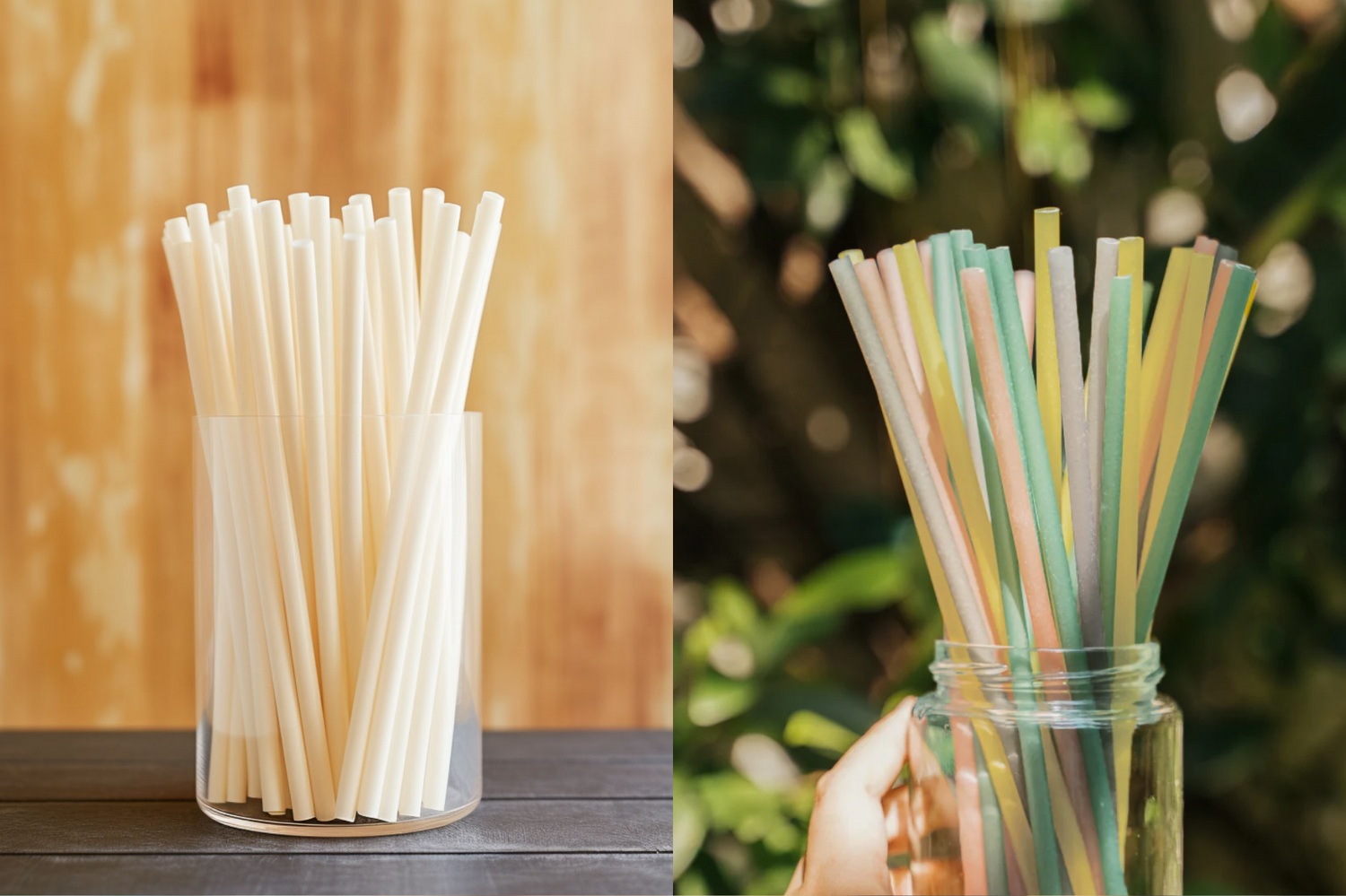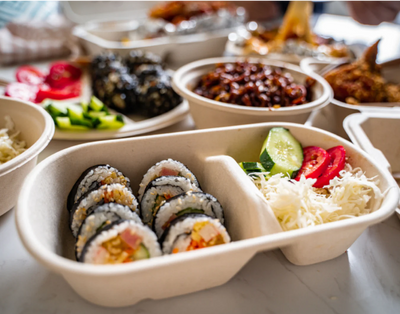As societal interest in environmental protection and sustainable living continues to grow, the urgency to address single-use plastic straws, one of the Earth's significant adversaries, becomes increasingly evident.
However, when considering alternatives, such as PLA biodegradable straws and home compostable straws, which option is the optimal choice? In this article, EQUO will conduct a comprehensive comparison between these two popular types of straws, empowering you to make the most informed decision for your eco-friendly endeavors.
1. PLA biodegradable straws
To address environmental pollution caused by plastic waste, PLA biodegradable straws were introduced as a potential alternative to traditional plastic ones. However, alongside their promoted advantages, PLA also presents several potential drawbacks that consumers should weigh before adoption.
>> Read More:- Compostable Straws: Plant-Based Straws Versus Paper Straws
- 7 Best Types of Biodegradable Straws: Eco Friendly Compostable
- 5 Benefits of Using Biodegradable Drinking Straws
- 7 Best Biodegradable Compostable Straws Made From Plants
- Paper Straws vs Plastic Straws: Should You Switch To Paper Straws?
1.1. What are PLA biodegradable straws?
PLA (Polylactic Acid) biodegradable straws are made from natural materials such as tapioca starch, sugar cane, or some other plants. PLA is thermoplastic, and compostable, meaning it can completely decompose in a controlled environment such as organic waste treatment facilities.

Source: Internet
1.2. Characteristics of PLA biodegradable straws
PLA biodegradable straws have some of the following characteristics:
- Limited degradability: PLA cannot decompose in the natural environment at home. Decomposing PLA requires specialized industrial composting conditions, which is not easy to do.
- Heterogeneous decomposition products: The decomposition process of PLA is often uneven, leaving behind microplastics that cause environmental pollution.

Source: Internet
Although PLA straws are considered a potential alternative to traditional plastic straws, there are still many limitations that need to be considered before widespread use.
2. Home compostable straws
Home compostable straws are made from natural materials, capable of completely decomposing in the natural environment after a short time.
2.1. What are home-compostable straws?
Home compostable straws are straws made from natural materials such as grass, sugarcane bagasse, rice, coconut, or coffee that can decompose in the natural environment quickly. Unlike PLA biodegradable straws, home-compostable straws are made from recycled materials and have a simpler production process, helping to reduce the negative impact on the environment from the production stage.

EQUO’s Grass Straws
2.2. Characteristics of home-compostable straws
Home-compostable straws have some outstanding features, as follows:
- Decompose quickly: One of the biggest advantages of compostable straws at home is their ability to decompose quickly in the natural environment, usually only taking a few months to completely decompose, reducing the burden on the environment. .
- Manufactured from natural materials: Home-compostable straws are often produced from natural materials such as sedge grass, sugarcane bagasse, coffee grounds, fresh fermented coconut water, rice starch,... which helps reduce resource consumption.
- Safe for health: Because they are made from natural materials and do not contain toxic chemicals, home-compostable straws are usually safe for users' health and the environment.

EQUO’s Coffee Straws
With the outstanding advantages of environmental friendliness, rapid decomposition, and health safety, home-compostable straws are not only an effective alternative to single-use plastic but It is also a symbol of creativity and progress in reducing daily waste.
2.3. Some types of home-compostable straws are popular
Rice straws are mainly made from rice flour, combined with some other plants such as sweet guards, butterfly pea flowers, and bamboo charcoal powder to color the product. In particular, rice straws do not contain toxic chemicals and preservatives.
The remarkable benefits of this eco-friendly straw line include its ability to decompose in the natural environment, its edible nature, and its array of colors. Furthermore, these straws are compatible with various types of beverages. Rice straws are odorless and tasteless, ensuring they won't alter the drink's flavor. Made from 100% natural ingredients, they are incredibly gentle and safe for children to use.

Coffee straws are one of environmentally friendly straws that do not contain plastic and can completely decompose in the natural environment. The product is made from 100% natural ingredients such as coffee grounds, has a delicate fragrance, natural color, and absolutely does not soften or disintegrate in water.

Sugarcane straws, as the name implies, are crafted from sugarcane bagasse, offering a solution to repurpose agricultural waste, particularly surplus bagasse from sugar production. This approach not only promotes environmental friendliness but also minimizes the waste of natural resources. Bagasse straws exhibit a light yellow hue and emit a subtle sweet brown sugar scent when used, without altering the taste of the beverage. Notably, these straws maintain their shape without softening or disintegrating, even after extended hours of use in water.

Eco-friendly grass straws are crafted entirely from grass plants, undergoing no chemical treatment during production. These straws are versatile, suitable for both hot and cold beverages, and offer a long-lasting solution. With the aim of substituting plastic straws, grass straw products provide users with a natural alternative to explore. Presently, the market offers two primary types of grass straws: dry grass straws and fresh grass straws.

Coconut straws are one of the newest and most impressive product lines on the market today. The product is made from fermented coconut water, has an ivory-white color, and has no taste. In particular, coconut straws are highly durable, have a sturdy structure, and can be reused many times a day. This is the advantage that makes this product promise to be a sustainable solution to replace plastic straws in the near future.

In short, home compostable straws are a great alternative to traditional plastic straws. They are environmentally friendly, safe for health, and bring many benefits to users. With outstanding advantages, home compostable straws are gradually becoming the top choice for consumers in the trend of green living and environmental protection.
3. Which is the more convenient, environmentally friendly straw option for users?
Join EQUO to explore and compare PLA biodegradable straws and home compostable straws to choose the most suitable choice for you!
3.1. Decomposition conditions
PLA biodegradable straws require specific composting environments or organic waste treatment facilities with controlled conditions for complete decomposition. This may inconvenience users, especially considering the limited number of waste treatment facilities capable of handling PLA worldwide.
On the other hand, home-compostable straws can decompose in a natural environment, such as your backyard or garden, offering a convenient and accessible disposal option.
3.2. Decomposition time
PLA biodegradable straws: The decomposition process of PLA can take up to several years to completely decompose in a controlled composting environment.
Home compostable straws: Natural materials often used to produce home compostable straws can decompose quickly in the natural environment, usually only taking a few months to completely decompose.

Source: Internet
3.3. Decomposition products
PLA biodegradable straws: The decomposition process of PLA is often uneven, and can create residual microplastics or not decompose completely, causing environmental pollution and harm to organisms.
Home compostable straws: Because they are produced from natural materials, the decomposition products of home compostable straws are often consistent and do not cause environmental pollution.Summary comparison table:
|
Characteristic |
PLA biodegradable straws |
Home compostable straws |
|
Decomposition conditions |
Need composting environment or organic waste treatment facilities |
Decomposes in natural environments such as backyard, home garden. |
|
Decomposition time |
It takes several years to completely decompose |
Decomposes quickly, usually taking only a few months |
|
Decomposition products |
Not consistent, may contain microplastics |
Homogeneous, and does not pollute the environment |
Based on the above characteristics, home compostable straws can be considered an environmentally friendly and more convenient choice for users than PLA biodegradable straws.
While PLA biodegradable straws boast environmental friendliness, EQUO deems home-compostable straws as a superior option for those seeking a practical solution. Not only are they environmentally friendly, but they are also convenient for daily use. With their natural ingredients and rapid decomposition in natural environments, home compostable straws have garnered popularity and preference among consumers. Regardless of your choice, remember to use them responsibly and contribute to environmental protection!


